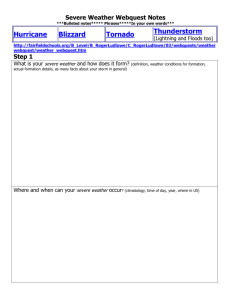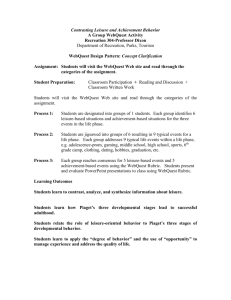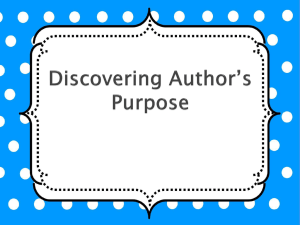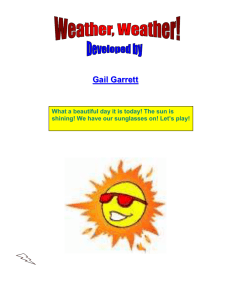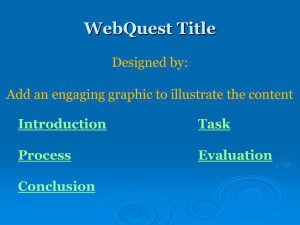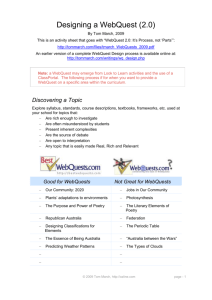WebQuest Design Template
advertisement
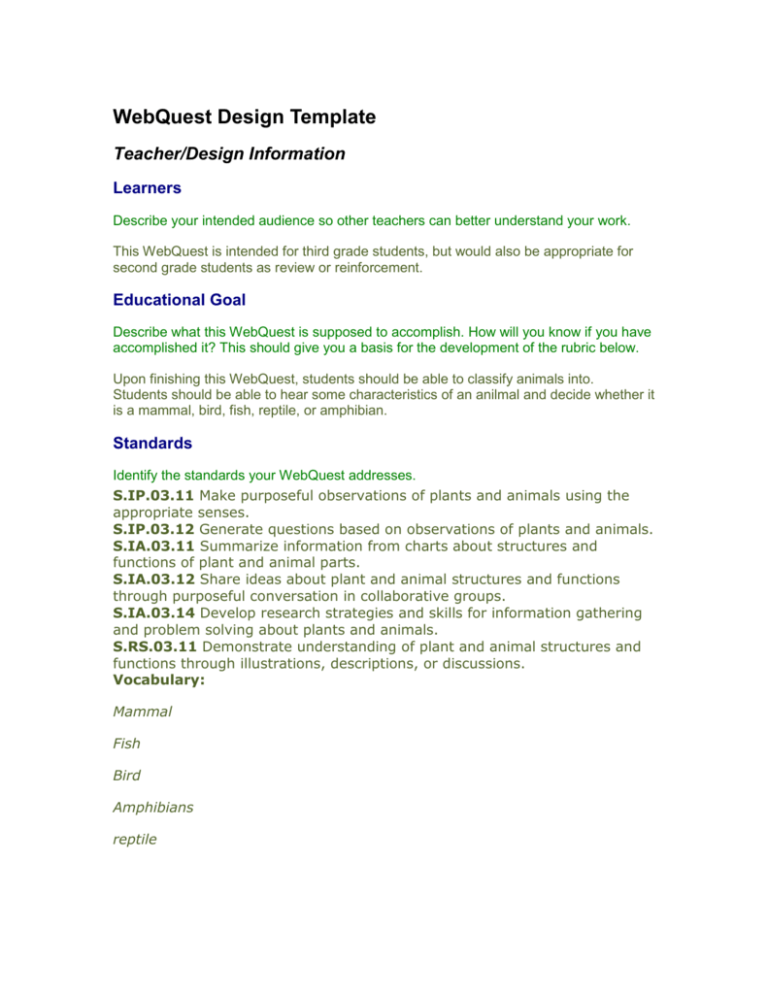
WebQuest Design Template Teacher/Design Information Learners Describe your intended audience so other teachers can better understand your work. This WebQuest is intended for third grade students, but would also be appropriate for second grade students as review or reinforcement. Educational Goal Describe what this WebQuest is supposed to accomplish. How will you know if you have accomplished it? This should give you a basis for the development of the rubric below. Upon finishing this WebQuest, students should be able to classify animals into. Students should be able to hear some characteristics of an anilmal and decide whether it is a mammal, bird, fish, reptile, or amphibian. Standards Identify the standards your WebQuest addresses. S.IP.03.11 Make purposeful observations of plants and animals using the appropriate senses. S.IP.03.12 Generate questions based on observations of plants and animals. S.IA.03.11 Summarize information from charts about structures and functions of plant and animal parts. S.IA.03.12 Share ideas about plant and animal structures and functions through purposeful conversation in collaborative groups. S.IA.03.14 Develop research strategies and skills for information gathering and problem solving about plants and animals. S.RS.03.11 Demonstrate understanding of plant and animal structures and functions through illustrations, descriptions, or discussions. Vocabulary: Mammal Fish Bird Amphibians reptile Process Give a thumbnail sketch of the process students will follow. Describe your rationale and explain the process to help other teachers better understand your strategies. Include key pointers such as special concerns or challenging points in the WebQuest. Resources Give a complete list of what is required to complete this WebQuest. The list may include books, supplies, resources, or other planning and preparation that would be needed. Also describe any additional resources or background material that may be helpful. WebQuest Elements Title Audience (grade level) Subject matter Author Introduction Tell your students what this WebQuest is all about. What is the ‘big question’ that they are to address? If they are to play a part (e.g., a detective), explain the situation to them. Get them excited about participating. Task Tell your students what the required outcome and/or product is. Maybe they are to: Solve a problem State and defend a position Explain or summarize something Create some product Write a letter to the editor or other audience Create a PowerPoint presentation or digital video or poster board Process Explain to your students the process they are to follow in order to complete the task. Number the tasks and explain what they are to do. Put all the information here that they need (as much as you can) such as links on the Internet or other online resources as well as any explanation. Perhaps you’ll explain some things in person, but also include it here for completeness and so it will be useful for others who aren’t in class to hear your explanation. Explain how you want the students to collaborate, especially if you have identified different roles you want different students to take. Include any tools (for example, flow charts or diagrams) you expect the students to use, and provide examples of any tools you want them to create (for example, summary tables). Evaluation Provide your rubric for evaluation. Indicate which categories are for individual evaluation and which are for group evaluation. Conclusion Summarize the key accomplishments upon completion of this WebQuest. You might also describe ideas for additional questions they might explore along similar lines of research. Credits Give credit where credit is due.
